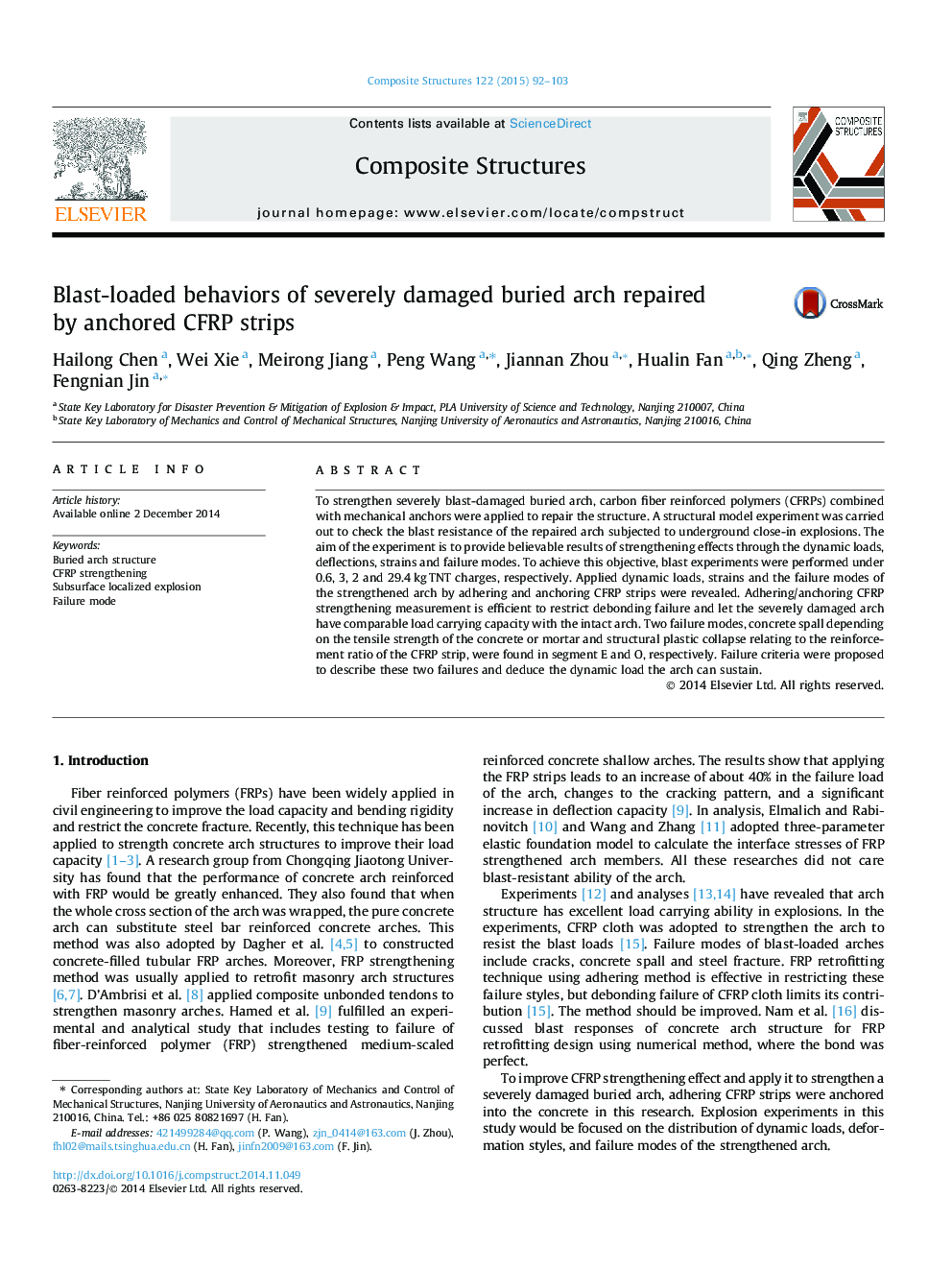| Article ID | Journal | Published Year | Pages | File Type |
|---|---|---|---|---|
| 251387 | Composite Structures | 2015 | 12 Pages |
•Anchoring/adhering method effectively improve blast responses of severely damaged arch.•Spall is the local failure dominated by tensile strength of concrete and mortar.•Structural plastic collapse is determined by reinforcement ratio of CFRP strips.•CFRP strips effectively resist concrete spall and make arch collapse ductile.
To strengthen severely blast-damaged buried arch, carbon fiber reinforced polymers (CFRPs) combined with mechanical anchors were applied to repair the structure. A structural model experiment was carried out to check the blast resistance of the repaired arch subjected to underground close-in explosions. The aim of the experiment is to provide believable results of strengthening effects through the dynamic loads, deflections, strains and failure modes. To achieve this objective, blast experiments were performed under 0.6, 3, 2 and 29.4 kg TNT charges, respectively. Applied dynamic loads, strains and the failure modes of the strengthened arch by adhering and anchoring CFRP strips were revealed. Adhering/anchoring CFRP strengthening measurement is efficient to restrict debonding failure and let the severely damaged arch have comparable load carrying capacity with the intact arch. Two failure modes, concrete spall depending on the tensile strength of the concrete or mortar and structural plastic collapse relating to the reinforcement ratio of the CFRP strip, were found in segment E and O, respectively. Failure criteria were proposed to describe these two failures and deduce the dynamic load the arch can sustain.
